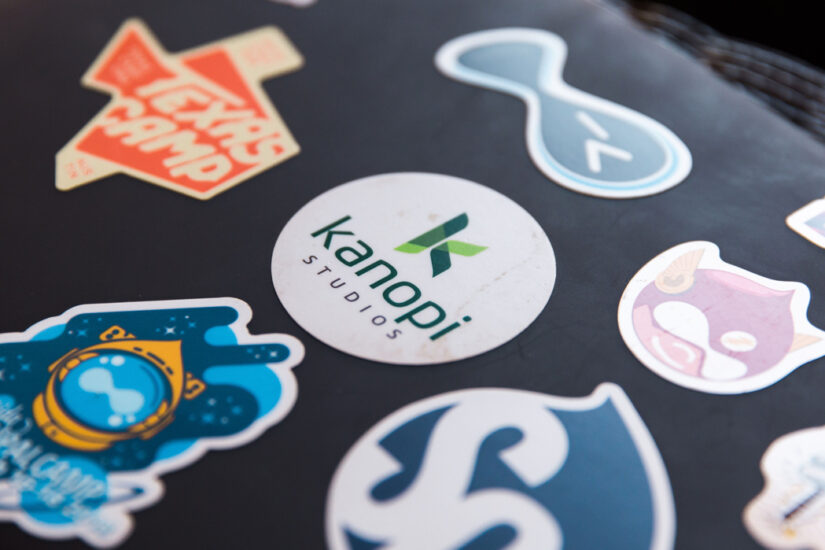GivingTuesday 2021 broke records by raising $2.7 billion, and researchers are predicting that this year’s GivingTuesday will bring in even more for nonprofits and charitable causes. Of course, organizations shouldn’t just rest on their laurels and assume these funds will automatically come to them. Rather, to prepare for GivingTuesday, nonprofits need to plan their community and campaign strategy in advance.
To help you get ready, this article will explore core communication tips specific to GivingTuesday before diving into strategies to get your website ready for this year-end celebration of giving.
- 4 Tips for Developing Your #GivingTuesday Communication Strategy
- 4 Website Tips to Boost Year-End Giving
Depending on your organization’s current approach to GivingTuesday, some parts of your strategy may already be planned and ready to go. For example, nonprofits who have a strong website likely won’t need to make major changes to get the best results possible on GivingTuesday. Explore these tips to find the solutions and strategies that fit your unique situation.
4 Tips for Developing Your #GivingTuesday Communication Strategy
Successful GivingTuesday campaigns have strategies to get their message out there and invite supporters to spread it as far as possible. Use these tips to improve your GivingTuesday communication strategy to reach an even wider audience than you did last year.
1. Set measurable goals.
Are you aiming to raise awareness for your cause? Increase engagement on your social channels? Earn a specific dollar amount? Whatever your goals are, establish a plan for how each objective will be measured and tracked with specific, quantifiable metrics you’ll use to evaluate your campaign’s success.
This will allow you to determine whether your efforts made up your ROI. It will also help you understand how you can adjust your approach for next year’s GivingTuesday.
GivingTuesday even has a goal setting worksheet. Also be sure to check out the step by step workbook for more worksheets including timeline planning, campaign design, narrative checklist, sample emails, staff delegation, and more.
2. Identify your #GivingTuesday audience.
Knowing your audience is a critical step for any marketing campaign, and how well you’re able to create appeals targeting that specific audience will have a big impact on your success.
When identifying your audience, try to be as specific as possible. Yes, donors can be considered an audience, but that is likely too broad of a category. The more you can narrow down your audience, the better, allowing you to more accurately choose the voice, tone, content, and presentation of your messages.
Try thinking in terms of specific groups that share similar values, motivations, and needs. Some examples might include young mothers of school-aged children, or middle-class, liberal retirees. Consider creating a values statement for your audience to zero in on their needs and motivations. Follow this model as a template:
As a (type of person) I want to (do something) so that (someone) can (experience a benefit).
Spending time getting to know your audience and their motivations will help you create messages that reach them more effectively.
3. Craft and test your messaging.
After determining your audience, think about the types of messages that will inspire them and speak to their values and priorities.
Create a few test options, and ask people who fit your target audience to review your messages and tell you which ones are most likely to motivate them to act. Feel free to enlist friends, family members, regular volunteers or others who are a part of your network to help out with this. Ask them about their experience and even ask them questions to help create user stories to get a better sense of what it’s like to interact with your content.
4. Choose your social media promotion channels.
Now that you know what you want to do, who you want to speak to, and what you want to say, it’s time to build your plan of action. GivingTuesday lends itself particularly well to marketing through social media, email, websites, and other online channels.
The hashtag #GivingTuesday gets millions of impressions each year, and social media allows for easy sharing. Think through the timing and number of your social posts, the channels you plan to use, the strategy for each channel, and how you’ll drive traffic back to your website. Here’s a breakdown of the four top social media channels most nonprofits should look to:
- Facebook. Facebook is ideal for longer posts, allowing you to explain a bit more about your mission, share a story, or present your latest research. Facebook has also been supportive of GivingTuesday in previous years, agreeing to match $8 million in donations in 2021.
- Instagram. Instagram is primarily focused on images, giving nonprofits with a strong graphic design or photography team a chance to stand out. Create eye-catching images to attract attention to your posts, then share a link to your donation page in your description, along with #GivingTuesday to help your discoverability.
- Twitter. Twitter focuses on short messages, making it a useful platform to provide quick updates. Throughout GivingTuesday, consider how you can use your Twitter account to provide supporters with updates on how close you are to your goal and other messages that will encourage engagement, such as polls, videos, questions, and other content outside of text-only messages.
- TikTok. TikTok has transformed the social media landscape with short, easy-to-produce videos that can be recorded on a cell phone. While your nonprofit can stand out with higher production value videos, you can also quickly make several more casual videos and like and comment on videos made by your supporters to help promote your GivingTuesday Campaign.
Make sure to drive traffic to strong landing pages on your website that will help users learn more or take your intended action. These pages should expand on the messages brought up in your social media posts and lead visitors through the donation process, making a cohesive giving experience.
Now that you’re engaging with your audience, let’s address your website so they can donate!
4 Website Tips to Boost Year-End Giving
As your organization’s main information hub for supporters, your website is an important resource for promoting your GivingTuesday campaign and other year-end giving opportunities. Use these tips to improve your website ahead of the GivingTuesday season.
1. Make it easier to donate.
GivingTuesday is about earning as many donations as possible in just 24 hours, so giving to your organization should be a fast, easy process. You can improve the donating experience ahead of GivingTuesday by:
- Reviewing your content for clarity. By using clear and simple words, you’ll ensure your content can be read by the greatest number of people possible. Since people read 25% slower on a screen compared to reading words on paper, keep it as brief as possible and make it easier to skim by using bullet points, lists, buttons, and bold text.
- Casting a critical eye on your user journey. Focus on how people navigate to and through your website and identify any barriers that block your users from reaching their goals. Over 59% of all internet traffic in 2022 has come from mobile devices, meaning more than half your audience will likely try to access your website from their phones. Make sure the content on your site is responsive and mobile-friendly.
- Reviewing the ease of your user experience (UX). User needs and behaviors change over time. You can ensure your site is continuing to meet the needs of your users by testing and refining your user experience. How easy are your donate buttons to find? Do you have clear giving amounts? Make recurring giving easy to retain your GivingTuesday supporters long after their initial donations.
- Make the donation form simple. 81% of users will abandon a form if it’s too difficult to fill out. Avoid this by only using the fields you absolutely need to use.
While your nonprofit should have other methods for accepting donations, online giving has only increased in popularity year-over-year, making your website one of the first places you should look to improve your giving experience.
2. Tell real stories.
Donors give because they want to make an impact, and you can demonstrate how your nonprofit does just that by sharing real stories about your work. Conduct interviews with your beneficiaries, volunteers, staff, and anyone else at your organization who may have a meaningful story to share with donors.
After collecting these stories, consider how you’ll present them in your outreach materials. While you should never distort the facts of what happened in each story to maintain an ethical standard, you will need to make creative decisions about how you frame them to encourage supporter engagement. Here are a few strategies that can make your stories stand out:
- Help donors visualize the impact of their donation by turning suggested fundraising amounts into tangible and positive outcomes. For example, a one-time donation could provide a Christmas dinner for a family of four, or a monthly donation could provide a young person with safe shelter and support, giving them the ability to enroll in school full time.
- Bring your stories to life with embedded images, films, and quotes from the people whose lives will be affected by each donation. Consider your audience and which platform will be best to share this story on. For example, you might share a longer video on Facebook, then edit it down for TikTok.
- Clarity is the key to conversion! Every call to action should have one central goal: to motivate your donors to take action. While details can make your stories more memorable, ensure your calls to action are clear and tell people what to do and why in the most direct way possible.
Remember that your website is also a great place to host storytelling videos. Use your website design tools to embed videos into pages about your initiatives, impact, and giving program to engage visitors.
3. Ensure accessibility.
Having an inaccessible website could mean losing potential donors. Even more importantly for many industries including nonprofits, it could also mean breaking the law. With 1 in 4 US adults living with a disability and many more with temporary or unreported disabilities, it’s vital your site follows web content accessibility guidelines (WACG).
You can improve your website’s accessibility for all visitors by:
- Adding captions and transcripts to your videos will ensure the greatest amount of people will be able to access your content. Doing this will also help search engines pick up your pages and index them, improving your visibility in organic searches.
- Ensuring your donation forms are screen-reader friendly. Include alternative text for images, practice navigating your pages via keyboard, and conduct other tests to ensure visitors using screen-readers can get the same experience as your other supporters.
- Making your pages readable by using sufficient color contrast between your text and backgrounds, allowing text size to be increased, and using multiple indicators besides just color to show required fields and other information.
There are a variety of tools built specifically for improving your website’s accessibility that you can explore. Remember that maintaining accessibility should be a year-long commitment, but double-checking that your pages are ready ahead of GivingTuesday can ensure that you engage as many supporters as possible.
4. Use a multichannel marketing strategy.
GivingTuesday campaigns succeed when they engage as many supporters as possible and encourage those supporters to engage as many members of their networks as possible. To get the word out, ensure you’re casting a wide net by using multiple channels in your outreach.
For most nonprofits, the majority of their GivingTuesday marketing will take place online, and the following channels are the most reliable for earning support:
- Your website. To collect donations online, all of your other messages will need to lead back to your website. However, your website is also a promotional tool as supporters linked from other communication channels will look to your website to learn about your mission and organization. Create a GivingTuesday event landing page that includes information about your organization, such as its mission, values, and how supporting your fundraiser will make a difference in the community. Ensure your website also makes it easy to further promote your GivingTuesday campaign by including social media sharing buttons on core pages like your donation form.
- Social media. As discussed, social media marketing is essential for making an impact on GivingTuesday. Ensure you already have a following on the platforms you intend to use to make sure your messages will get shared by your supporters. Use #GivingTuesday in your posts to reach new audiences, get people excited about your campaign, and direct them to your site quickly in order to donate.
- Email. Email remains one of the most reliable ways to reach supporters directly. Send out personalized messages to your supporter email lists on GivingTuesday to tell them about your campaign, ask for a donation, and invite them to continue spreading the word by making a social media post or telling a friend about your cause.
Many of your supporters will likely connect with your nonprofit on multiple channels over the course of GivingTuesday, but this will ultimately help your campaign more. Donors often need to see several calls to action before they finally act on one, so creating multiple touchpoints with the same supporters will likely pay off in the long run.
This is a lot of information, but even doing a few of the items on this list can translate into more money for your cause before the end of the year. You want to make your donors feel empowered this GivingTuesday. Spread your message online, showcase your impact, and make it easy to make a difference. Building a digital connection with your donors will only become more important as giving becomes more common online.
Need more information? Here are tips and resources straight from GivingTuesday:
- Make sure GivingTuesday is on your most engaged supporter’s calendars.
- Share these posts to let your followers know that GivingTuesday is coming in hot! (Facebook, Twitter, Instagram)
- Access resources, toolkits, sample campaign templates, and more
- Review innovative GivingTuesday campaigns from 2021









